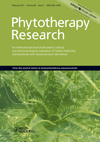Diallyl Disulfide Induces MUC5B Expression via ERK2 in Human Airway Epithelial Cells
Abstract
Garlic has been shown to have antimicrobial, hypolipidemic, antithrombotic, antitumor and immunostimulatory properties. The medicinal effects of garlic are derived from the flavonoid and organosulfur components. Diallyl disulfide (DADS), an organosulfur, is the main component responsible for the diverse biological effects of garlic. However, the effects of DADS on mucin gene expression in airway epithelial cells have not been reported to date. Therefore, this study was performed to investigate the effects and brief signaling pathway of DADS associated with MUC5B expression in NCI-H292 epithelial cells using RT-PCR, ELISA, western blot, immunocytochemistry and cell transfection with siRNA.
DADS induced MUC5B expression and activated the phosphorylation of ERK1/2 MAPK. In addition, U0126 inhibited DADS-induced MUC5B expression and DADS-activated phosphorylation of ERK1/2 MAPK. Moreover, the immunopositive cells for MUC5B protein did not appear after treatment of DADS with U0126, and the knockdown of ERK2 MAPK by ERK2 MAPK siRNA significantly blocked DADS-induced MUC5B mRNA expression. However, DADS did not activate the phosphorylation of p38 MAPK, and SB203580 did not inhibit DADS-induced MUC5B expression.
This is the first study to show that DADS-induced MUC5B expression appears to be regulated by activation of the ERK2 MAPK signaling pathway in human NCI-H292 airway epithelial cells. Copyright © 2011 John Wiley & Sons, Ltd.




